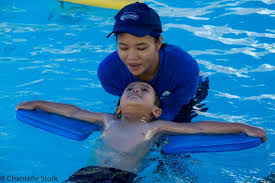If you’ve ever signed up for a water safety course or watched a swim meet, you might wonder — is there actually a difference between a swimming teacher and a swimming coach?
Short answer: yes, and it matters more than you might think.
Here’s a quick breakdown:
- Swimming teachers focus on beginner to intermediate skills like basic strokes, floating, breathing, and water confidence — often for children or adults new to swimming.
- Swimming coaches work with athletes or advanced swimmers to refine techniques, build stamina, and compete at higher levels.
Sounds simple, right? But in practice, the difference can be as vast as a calm pool versus open surf. Let’s dive deeper.
What does a swimming teacher actually do?
A swimming teacher’s primary goal is safety and skill-building. They introduce learners to water fundamentals like:
- Floating and body positioning
- Basic strokes (freestyle, backstroke, breaststroke)
- Breathing techniques
- Water entry and exit safety
- Treading water and survival skills
Teachers often work in smaller group classes or one-on-one lessons. You’ll find them leading structured sessions, using floatation aids, and celebrating every tiny milestone — like a nervous toddler finally putting their face underwater.
Anyone who’s tried teaching a wiggly four-year-old to float knows it’s trickier than it sounds. It takes incredible patience, encouragement, and a sense of humour.
Many swimming teachers are certified through programs like the AUSTSWIM Teacher of Swimming and Water Safety™ qualification — Australia’s recognised standard. This ensures they know how to prioritise safety, build trust, and make lessons engaging for nervous beginners.
Bottom line? Swimming teachers build the foundation that could literally save a life one day.
What about a swimming coach — what’s their role?
Once basic survival skills are locked in, that’s where swimming coaches take over.
Swimming coaches work with individuals or squads to:
- Refine stroke technique for speed and efficiency
- Build endurance and aerobic fitness
- Develop race strategies and mental toughness
- Monitor training loads and recovery
- Prepare athletes for competitions at club, state, national, or even Olympic level
Coaches use drills, video analysis, fitness testing, and race simulations. You’ll often see them poolside with stopwatches, shouting split times, or giving feedback with a clipboard (or iPad, these days).
Unlike teachers, who focus on introducing new swimmers to the water, coaches assume their swimmers already have a solid technical base. Their job is to take “good” and turn it into “great.”
And make no mistake — coaching isn’t just about being a good swimmer yourself. It requires deep technical knowledge, strategic planning, and emotional intelligence.
Sometimes you’re a mentor, sometimes you’re a tactician, sometimes you’re just a shoulder after a tough race.
Which one do you need — a swimming teacher or a swimming coach?
It depends entirely on your current skill level and your goals.
You might need a swimming teacher if:
- You’re a beginner (child or adult)
- You feel unsafe or anxious in water
- You want to learn correct technique from scratch
- You’re doing a water safety course for certification or confidence
You might need a swimming coach if:
- You already swim confidently across multiple strokes
- You want to join a squad or compete
- You’re aiming to improve race times or endurance
- You want structured, periodised training
Makes sense, right? It’s a bit like learning to ride a bike. First you need training wheels and encouragement (that’s your teacher). Later, you might want to enter races and beat your best time — and that’s where a coach steps in.
Can someone be both a swimming teacher and a swimming coach?
Absolutely — and many professionals are!
Some start by teaching water safety and basic skills, then upskill into performance coaching as their career develops.
Others juggle both — teaching learn-to-swim classes during the day and coaching squads in the evenings.
However, not every swimming teacher wants to coach elite athletes. And not every swimming coach enjoys teaching toddlers how to kick. They’re different skill sets, different mindsets.
(Anyone who’s juggled a crying preschooler and a surly teen swimmer back-to-back will tell you… it’s a unique kind of chaos.)
Why does the difference matter?
Because the right support at the right time changes everything.
Imagine putting a complete beginner into an elite squad. Disaster, right? They’ll feel overwhelmed, unsafe, and probably give up.
Or imagine an advanced swimmer stuck doing basic floating drills with beginners. Frustrating, demotivating — and a total waste of potential.
Matching the right teaching or coaching to the swimmer’s needs is critical for safety, progress, and — importantly — love of the water.
FAQ: Common Questions About Swimming Teachers vs Coaches
Q: Do swimming teachers also teach adults?
Yes! Many adults join adult learn-to-swim classes led by qualified teachers. It’s never too late.
Q: Is a water safety course taught by a coach or a teacher?
Typically a swimming teacher. They specialise in safety, basic skills, and building confidence for non-swimmers or beginners.
Q: Can a child switch from a teacher to a coach later on?
Definitely. Most swimmers transition from lessons (teachers) to squads (coaches) as their skills and confidence grow.
Final Thoughts
In short, swimming teachers help people start safely, and swimming coaches help people excel.
Both roles are vital, and choosing the right one makes all the difference to a swimmer’s journey.
If you’re considering a water safety course, working with an accredited teacher is your safest first step. Later, if you catch the swimming bug (fair warning: it’s contagious), a coach can help you push boundaries you never thought possible.
For more insights about learning to swim or building water confidence, you might find this AUSTSWIM certified swimming teacher information particularly useful — especially if you’re starting your journey with a trusted professional.
And if you’re also curious about the broader swim teaching certifications available, you might enjoy reading about swim teacher qualifications offered through AUSTSWIM, Australia’s leading organisation for aquatic education.

